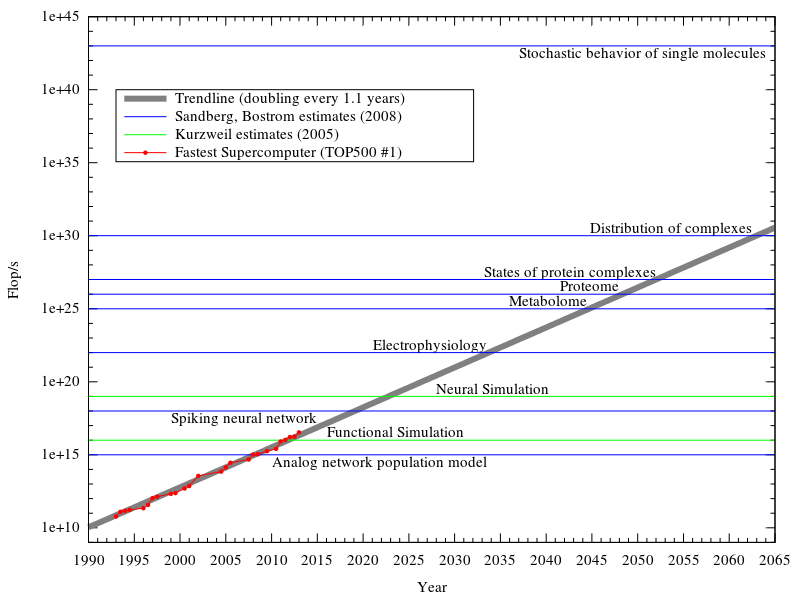The title is pretty self-explanatory. How powerful does a computer have to be before it has the hardware capability to simulate and emulate a human mind in real-time?
I'm leaving the question of the software needed for later, but feel free to address it if it's a vital part of the answer.
Criteria for judging an answer:
- This should almost go without saying, but a system with such a capability should be able to pass the Turing test.
- The capability must be at least real-time, i.e. it cannot take 5 months to simulate 10 seconds of brain activity.
- The capability must be capable of continuous operation, i.e. it cannot be on for a minute and off for the rest of the year. Continuous operation need not be mandatory however.
- The capability must be such that the 'brain' can react to new information, learn and communicate its results.
- Ideally, I'd like a physically precise answer or range. I'm not sure what the appropriate metric is, so in the absence of better ideas, I'll say we go for petaflops. If you have a better metric, feel free to use it instead.
- Bonus points: (Not mandatory, but nice to have) How soon can we get there, and what would be the electric bill? How small can we make it, in the limit? How fast can we make it, in the limit?
The motivation behind placing this in Worldbuilding is to have a canon reference answer on issues of computation related to the emulation-based paths towards the singularity, computronium, sim-humans and other related topics, in order to aid in constructing a realistic futuristic society. Needless to say, the question assumes that constructing such emulations is possible.
PS To avoid ontological confusion, further definitions:
Emulation is the process of mimicking the outwardly observable behavior to match an existing target. The internal state of the emulation mechanism does not have to accurately reflect the internal state of the target which it is emulating.
Simulation, on the other hand, involves modeling the underlying state of the target. The end result of a good simulation is that the simulation model will emulate the target which it is simulating.

